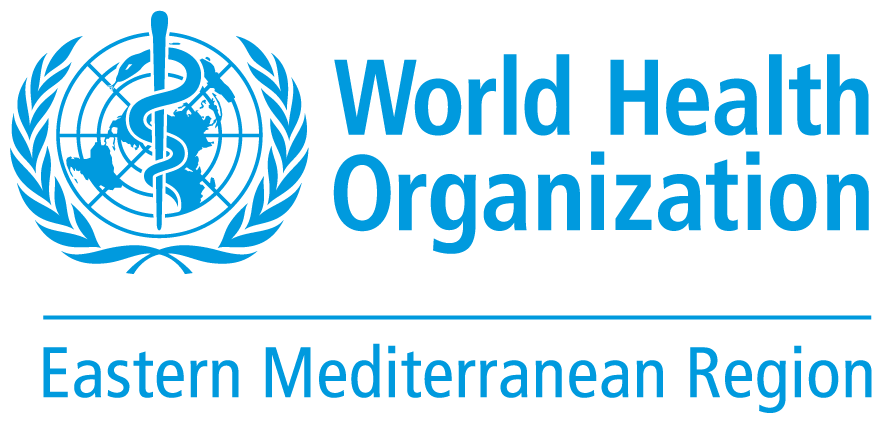Antimicrobial resistance and cross-cutting programmes – Resources
Key resources on AMR
- Operational approach to antimicrobial stewardship in the WHO Eastern Mediterranean Region | French
- WHO Investment case deep dive: antimicrobial resistance. Investment case 2025–2028. Geneva: World Health Organization; 2024.
- Antimicrobial stewardship programmes in health-care facilities in low- and middle-income countries. A WHO practical toolkit. Geneva: World Health Organization; 2019.
- Global database for tracking antimicrobial resistance (AMR) country self-assessment survey (TrACSS) [online database]. Geneva: World Health Organization; 2023.
- GRAM Project [online database]. University of Oxford; 2024.
- GLASS dashboard [online database]. World Health Organization; 2024.
- Health workers’ education and training on antimicrobial resistance: curricula guide. Geneva: World Health Organization; 2019.
- WHO AWaRe (Access, Watch, Reserve) antibiotic book. Geneva: World Health Organization; 2022.
- WHO competency framework for health workers’ education and training on antimicrobial resistance. Geneva: World Health Organization; 2018.
- WHO implementation handbook for national action plans on antimicrobial resistance: guidance for the human health sector. Geneva: World Health Organization; 2022.
- WHO policy guidance on integrated antimicrobial stewardship activities. Geneva: World Health Organization; 2021.
Key resources on TB

- Factsheet: Antimicrobial resistance and tuberculosis
- WHO consolidated guidelines on tuberculosis. Module 3: Diagnosis – rapid diagnostics for tuberculosis detection 2021 update. (Geneva: World Health Organization; 2021).
- WHO consolidated guidelines on tuberculosis. Module 4: Treatment – drug-resistant tuberculosis treatment, 2022 update. (Geneva: World Health Organization; 2022).
- WHO operational handbook on tuberculosis. Module 4: treatment – drug-resistant tuberculosis treatment, 2022 update.
Key resources on addressing AMR and IPC in health emergencies

- Factsheet: Addressing antimicrobial resistance in emergencies
- The WHO AWaRe (Access, Watch, Reserve) antibiotic book.
Geneva: World Health Organization; 2022. - Managing meningitis epidemics in Africa: A quick reference guide for health authorities and health-care workers.
Geneva: World Health Organization; 2022. - WHO Recommendations for prevention and treatment of maternal peripartum infections. Geneva: World Health Organization; 2016.
- Therapeutics and COVID-19: living guideline.
(Geneva: World Health Organization; 2023). - Guidelines for the clinical management of severe illness from influenza virus infections.
(Geneva: World Health Organization; 2022). - Global WASH Cluster. Delivering humanitarian WASH at scale, anywhere and ANY TIME, Road Map 2020–2025.
Geneva: UNICEF; 2020.
Key resources on HIV

- Factsheet: HIV and antimicrobial resistance
- Global AIDS update 2024. Geneva: UNAIDS; 2024
- HIV drug resistance: brief report 2024. Geneva: World Health Organization; 2024
- HIV drug resistance report 2021. Geneva: World Health Organization; 2021
- The role of HIV viral suppression in improving individual health and reducing transmission. Geneva: World Health Organization; 2023
- Surveillance of acquired HIV drug resistance in populations receiving ART. Geneva: World Health Organization; 2023
Key resources on immunization

- Factsheet: How immunization strengthens the fight against antimicrobial resistance
- The Immunization Agenda 2030 [website]. Geneva: World Health Organization.
- Guidelines for developing a national immunization strategy. Geneva: World Health Organization; 2021.
- Immunization dashboard [website]. Geneva: World Health Organization.
- The big catch up. [website]. Geneva: World Health Organization; 2023.
- WHO recommendations for routine immunization - summary tables [website]. Geneva: World Health Organization.
- Introduction of new vaccines [website]. Geneva: World Health Organization.
- Measles and rubella strategic framework: 2021-2030. Geneva: World Health Organization; 2020.
References
- Kim C, Holm M, Frost I, Hasso-Agopsowicz M, Abbas K. Global and regional burden of attributable and associated bacterial antimicrobial resistance avertable by vaccination: modelling study. BMJ Glob Health. 2023; 8(7):e011341.
- Leveraging vaccines to reduce antibiotic use and prevent antimicrobial resistance. Geneva: World Health Organization; 2021.
Key resources on cancer
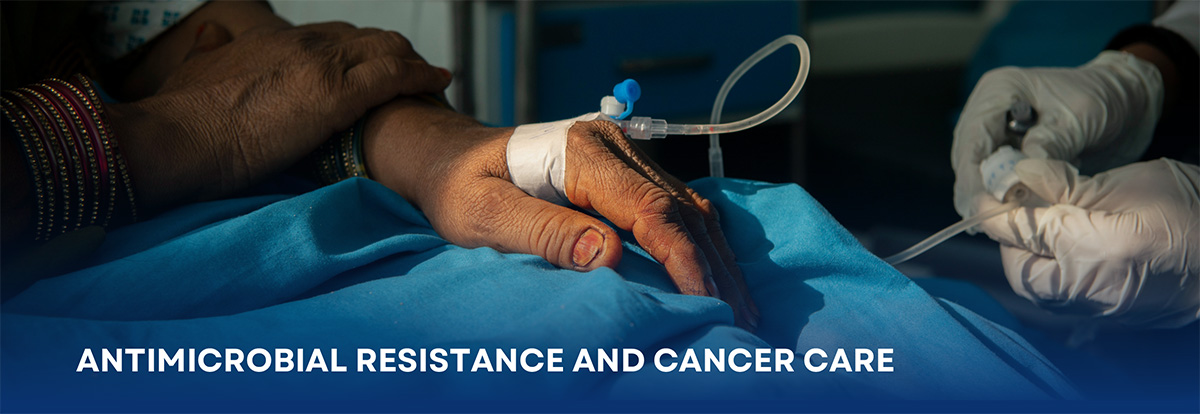
- Factsheet: Antimicrobial resistance and cancer care
- Framework for action on cancer prevention and control in the WHO Eastern Mediterranean Region. Cairo: WHO Regional Office for the Eastern Mediterranean; 2019.
- Cancer control. Kuwait City: Eastern Mediterranean NCD alliance; 2022.
- Report on the Regional workshop on empowering progress: strengthening implementation of the WHO Global Initiative for Childhood Cancer in the Eastern Mediterranean Region. Cairo: WHO Regional Office for the Eastern Mediterranean; 2024.
- Global strategy to accelerate the elimination of cervical cancer as a public health problem. Geneva: World Health Organization; 2020.
- Regional cervical cancer elimination strategy for the Eastern Mediterranean. Cairo: WHO Regional Office for the Eastern Mediterranean; 2023.
- The global initiative for childhood cancer [website]. Geneva: World Health Organization; 2021.
- The global breast cancer initiative [website]. Geneva: World Health Organization.
- Global cancer observatory [website]. Lyon: International Agency for Research on Cancer.
- Pourghazian N, Krakauer E, Salama S, Fadhil I, Osman H. The Eastern Mediterranean regional palliative care expert network: Designing a roadmap for palliative care development in the region. East Mediterr Health J. 2022;27(8):610–613.
Key resources on IPC
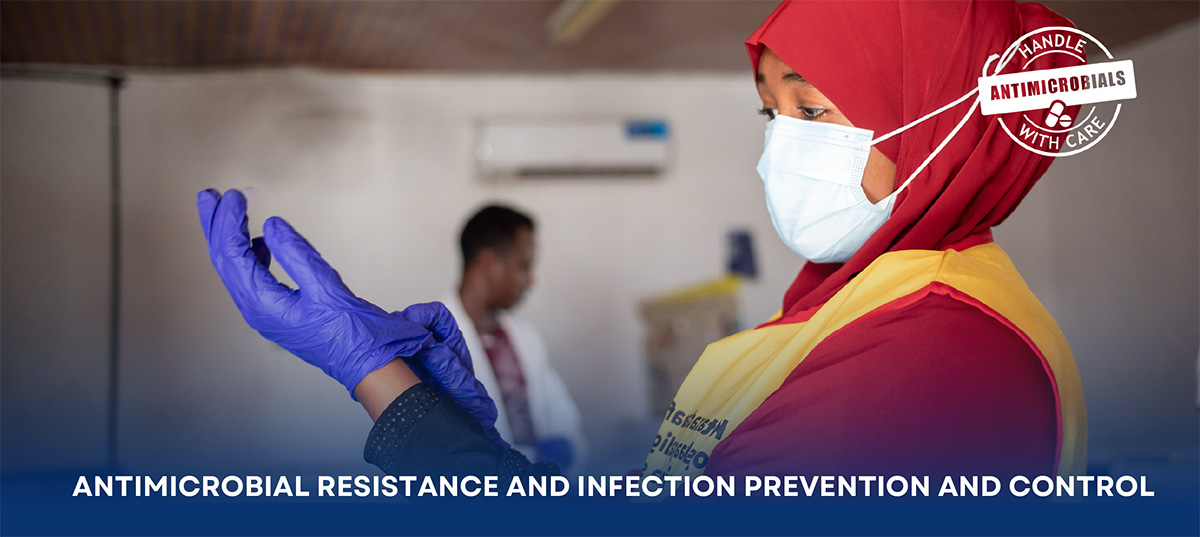
- Factsheet: Antimicrobial resistance and infection prevention and control
- Core competencies for infection prevention and control professionals. Geneva: World Health Organization; 2020
- Guidelines on core components of infection prevention and control programmes at the national and acute health care facility level. Geneva: World Health Organization; 2016.
- Minimum requirements for infection prevention and control programmes. Geneva: World Health Organization; 2019
- Global report on infection prevention and control. Geneva: World Health Organization; 2022.
- Global strategy on infection prevention and control. Geneva: World Health Organization; 2023
Key resources on WASH
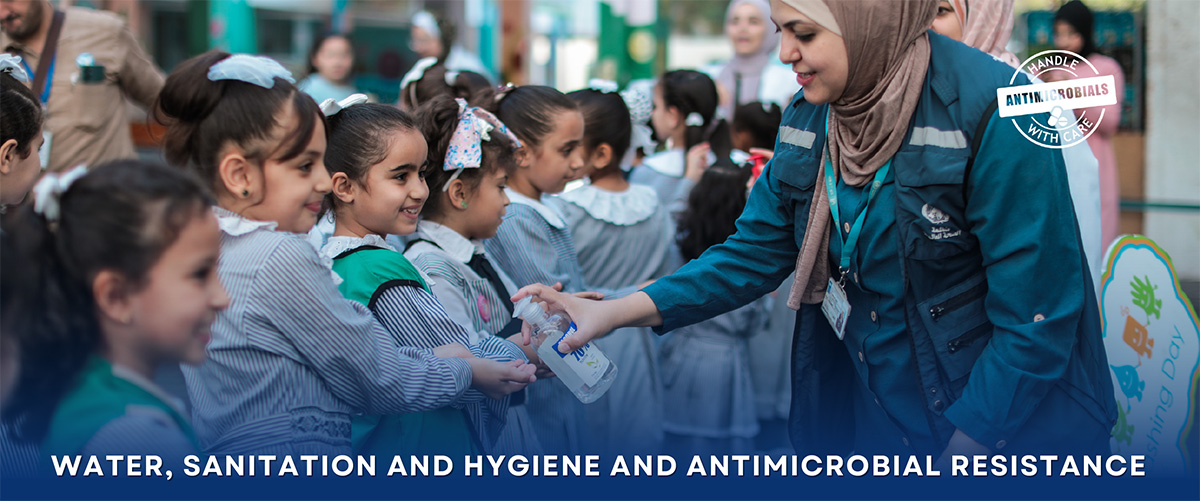
- Factsheet: Water, sanitation and hygiene and antimicrobial resistance
- Technical brief on water, sanitation, hygiene (WASH) and wastewater management to prevent infections and reduce the spread of antimicrobial resistance (AMR). Geneva: World Health Organization; 2020.
- Combatting Antimicrobial resistance through water, sanitation and hygiene and infection prevention and control in health care. Geneva: World Health Organization; 2020
- WHO/UNICEF Joint Monitoring Programme. Progress on household drinking water, sanitation and hygiene 2000-2022: special focus on gender. New York: United Nations Children’s Fund, 2023.
- WHO/UNICEF Joint Monitoring Programme. Progress on WASH in health care facilities 2000–2021: special focus on WASH and infection prevention and control (IPC). New York: United Nations Children’s Fund, 2023.
Key resources on diabetes
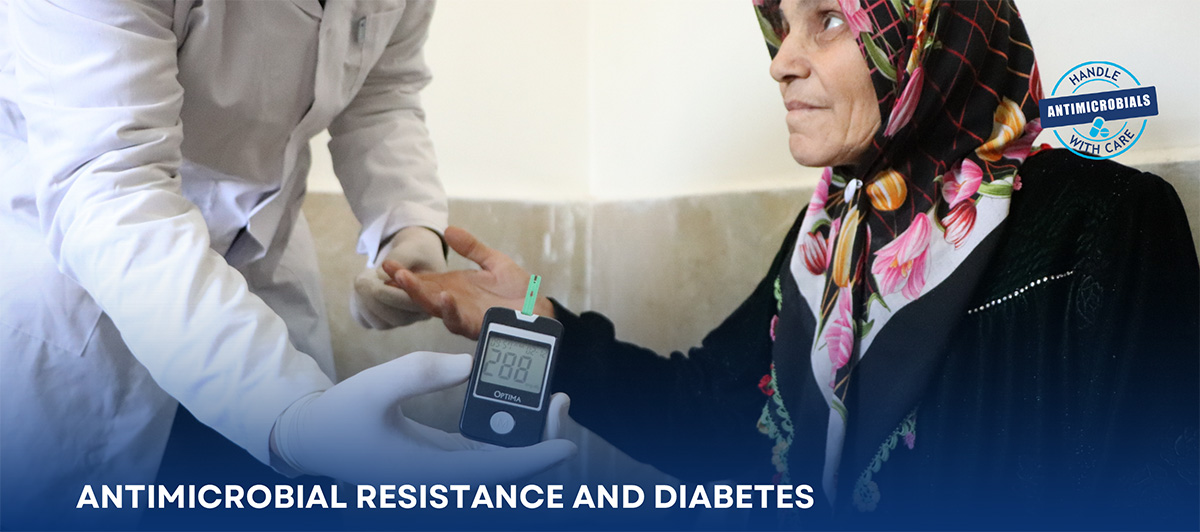
- Factsheet: Antimicrobial resistance and diabetes
- Global action plan for the prevention and control of NCD 2013–2020 [extended to 2030]. Geneva, WHO; 2013
- Framework for action to implement the UN Political Declaration on NCDs, including indicators to assess country progress by 2030.
Cairo: WHO EMRO; 2019. - Framework for action on diabetes prevention and control in the WHO Eastern Mediterranean Region.
Cairo: WHO Regional Office for the Eastern Mediterranean; 2021. - WHO package of essential noncommunicable (PEN) disease interventions for primary health care.
Geneva, World Health Organization; 2020. - Guideline for the pharmacological treatment of hypertension in adults.
Geneva, World Health Organization; 2021.
References
- Number of deaths attributed to non-communicable diseases, by type of disease and sex. Geneva, World Health Organization; 2024.
- Diabetes in Middle-East & North Africa – 2021. Brussels: International Diabetes Federation.
- Epidemiological status of type 2 diabetes mellitus in the Middle East and North Africa, 1990–2019. Moradinazar M, Babakhani M, Rostami R, Shakiba M, Moradi A, Shakiba E. East Mediterr Health J. 2022;28(7):478–488.
- Addressing diabetes as a public health challenge in the Eastern Mediterranean Region. Cairo: WHO Regional Office for the Eastern Mediterranean; 2021.
- Antimicrobial resistance patterns in diabetic foot infections, an epidemiological study in northeastern Italy. Boschetti G, Sgarabotto D, Meloni M, Bruseghin M, Whisstock C, Marin M, et al. Antibiotics. 2021;10(10):1241.
- Antimicrobial resistance pattern among diabetic patients with urinary tract infection at Bangladesh. Mohammad Saifuddin FC, Selim S, Uddin N, Pathan F. Endocr Pract. 2016;22:61.
- Aspects of the antimicrobial resistance profile in infections with Escherichia coli and Klebsiella pneumoniae in diabetic patients. Petrovici CG, Dorobăţ C, Matei M, Teodor A, Luca V, Miftode E. Rev Med-chir Soc Med Nat Iasi. 2011 Jul;115(3):769–775.
- Human gut antibiotic resistome and progression of diabetes. Shuai M, Zhang G, Zeng FF, Fu Y, Liang X, Yuan L, et al. Adv Sci. 2022;9(11):2104965.
- HEARTS D: Diagnosis and management of type 2 diabetes. Geneva, World Health Organization; 2020.
Key resources on malaria
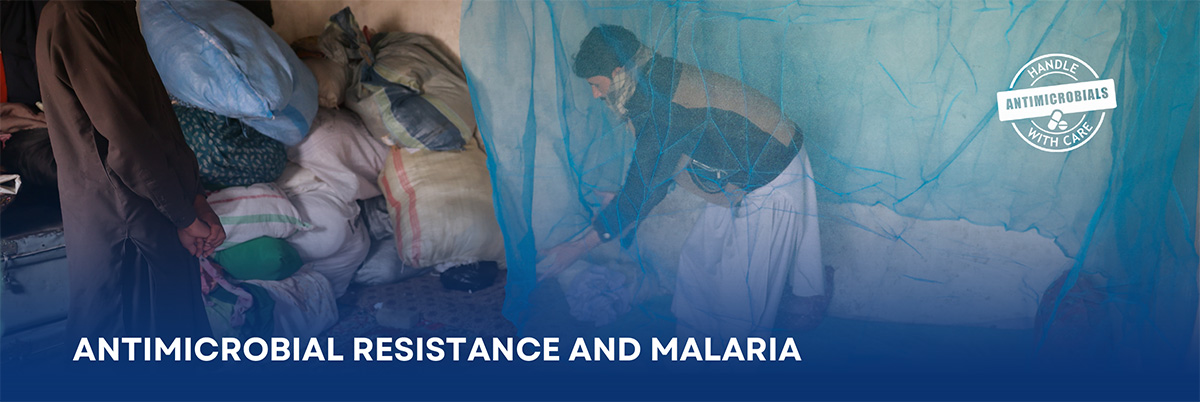
- Factsheet: Antimicrobial resistance and malaria
- Antimalarial drug efficacy and resistance in malaria-endemic countries in HANMAT-PIAMnet countries of the Eastern Mediterranean Region 2016–2020: Clinical and genetic studies. Adam M, Nahzat S, Kakar Q, Assada M, Witkowski B, Tag Eldin Elshafie Am et al. Trop Med Int Health. 2023;28(10):817–829.
- Strategy to respond to antimalarial drug resistance in Africa. Geneva: World Health Organization; 2022.
- Malaria action plan for the Eastern Mediterranean Region, 2022–2030. Cairo: WHO Regional Office for the Eastern Mediterranean; 2023.
- World malaria report 2023. Geneva: World Health Organization; 2023.
- المباديء التوجيهية لمنظمة الصحة العالمية بشأن الملاريا – 3 حزيران/يونيو [WHO guidelines for malaria - 3 June 2022]. Geneva: World Health Organization; 2022 (in Arabic).
- WHO Guidelines for malaria. Geneva: World Health Organization; 2023.
- Malaria [website]. Geneva: World Health Organization.
Key resources on child health
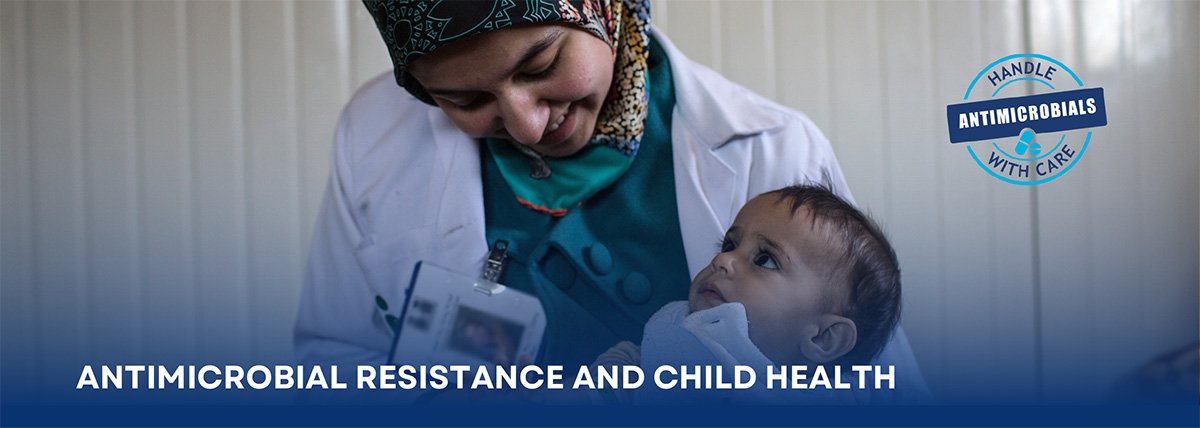
- Factsheet: Antimicrobial resistance and child health
- Early essential newborn care: clinical practice pocket guide, second edition. Geneva: World Health Organization; 2022.
- Child and adolescent health in humanitarian settings [pdf]; interactive. Geneva: World Health Organization; 2021.
- Pocket book of hospital care for children, second edition. Geneva: World Health Organization; 2013.
- The urgent threat of drug-resistant infections protecting children worldwide. New York: United Nations Children’s Fund; 2023.
- Integrated management of childhood illness. United Nations Children’s Fund, World Health Organization. Geneva: WHO; 1995.
Resources
- Early essential newborn care: clinical practice pocket guide, second edition. Geneva: World Health Organization; 2022.
- Child and adolescent health in humanitarian settings [pdf]; interactive version. Geneva: World Health Organization; 2021.
- Pocket book of hospital care for children, second edition. Geneva: World Health Organization; 2013.
- The urgent threat of drug-resistant infections protecting children worldwide. New York: United Nations Children’s Fund; 2023.
- Integrated management of childhood illness. United Nations Children’s Fund, World Health Organization. Geneva: WHO; 1995.
Key resources on access to antibiotics

Key resources on access to medicines
- Factsheet: Antimicrobial resistance and access to antibiotics
- Sixty-seventh World Health Assembly, Agenda item 15.4, 24 May 2014: Access to essential medicines. Geneva: World Health Organization (WHA67.22).
- Wirtz VJ, Hogerzeil HV, Gray AL, Bigdeli M, de Joncheere CP, Ewen MA, et al. Essential medicines for universal health coverage. Lancet. 2017; 389.10067:403–476.
- WHO methodology for a global programme on surveillance of antimicrobial consumption. Geneva: World Health Organization; 2017.
- The WHO AWaRe (Access, Watch, Reserve) antibiotic book. Geneva: World Health Organization; 2022.
- GLASS guide for national surveillance systems for monitoring antimicrobial consumption in hospitals. Geneva: World Health Organization; 2020
References
- Access to medicines: making market forces serve. In: Ten years in public health 2007–2017: report by Dr Margaret Chan, Director-General. Geneva: World Health Organization; 2017.
- Regional strategy to improve access to medicines and vaccines in the Eastern Mediterranean, 2020–2030, including lessons from the COVID-19 pandemic. October 2020.
- Mahmood RK, Gillani SW, Alzaabi MJ, Gulam SM. Evaluation of inappropriate antibiotic prescribing and management through pharmacist-led antimicrobial stewardship programmes: a meta-analysis of evidence. Eur J Hosp Pharm. 2022;29(1):2–7.
- Alagha H. Dispensing antibiotics without prescription in the Arab world: a narrative review of the prevalence, appropriateness, facilitators and preventive interventions. Bull Pharm Sci Assiut. 46. 399-420.
